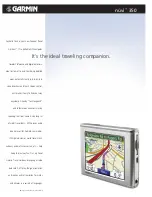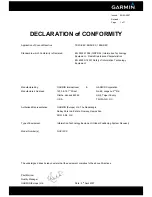
16
Example 2.
TCPCONN=1,*1.5,4
Defines that after first failed attempt, next will occur after 1 minute. If second try
will also fail time period will by multiplied by 1.5, and next one will occur after
1.5 minutes. Each next time period will by multiplied by 1.5 until reach of 4
minutes. Next attempts will occur after 4 minutes. If server is disconnected,
attempts to connect will look like that (P means connection attempt, number
means time period in minutes): P, 1, P, 1.5, P, 2.25, P, 3.38, P, 4, P, 4, P, ..........
Default value: 1,+0,1
VOLUME=a,b,c,d,e,f,g
For each of the following events:
a)
Start RFID loop
b)
Read RFID confirmation
c)
Discharged battery warning
d)
e)
SMS message received
f)
g)
prealarm signalling (eg. ManDown)
You can define one of the following method of signaling:
0 - no acoustic signal, no vibration
1 – quiet acoustic signal, no vibration
2 - loud acoustic signal, no vibration
4 – no acoustic signal, vibration
5 – quiet acoustic signal, vibration
6 – loud acoustic signal, vibration
Note:
Always assign 0 to the d and f positions.
Example:
VOLUME=1,2,6,5,0,5,0,6
Start RFID loop will be defined by quiet acoustic signal without vibration, Read RFID
confirmation will be defined by quiet acoustic signal without vibration, Discharged
battery warning will be defined by loud acoustic signal with vibration etc
.
Note:
It is not necessary to give all the parameters, only the first X, for example:
VOLUME=2 sets the signal only for start RFID loop, the other parameters remain
unchanged. As a consequence, to set the parameter to the position of N all
preceding parameters should also be set. For example, you can not set signaling for
"
c) Discharged battery warning" without giving "a) Start RFID loop" warning and
"
b) Read RFID confirmation" in correct order.
TCPWDT=t
sets GPRS link control, defines times between lost of GPRS connection and reset of
GSM modem.
t
- time period [in minutes, range: 5 - 999]
To disable this function t must be an empty string.















































